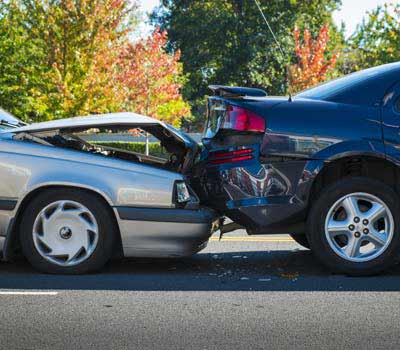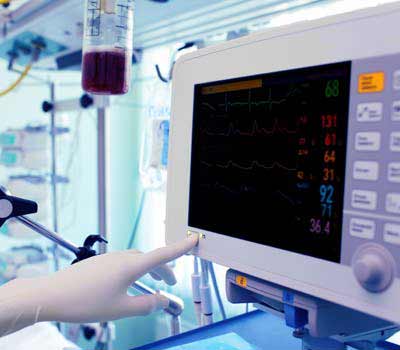
When you need help pursuing a personal injury claim against the at-fault truck driver, turn to a Commack truck accident lawyer from Carner & DeVita.
Even with an empty trailer, a semi-truck can weigh up to 35,000 pounds. When it’s loaded, the legal maximum weight is 80,000 pounds. Compare a fully-loaded 40-ton truck to a one-ton passenger vehicle, and you can see why collisions between these vehicles can be so deadly.
If you or a loved one were injured in a truck accident in Commack, you probably already know how expensive and stressful these accidents can be, especially when the truck driver’s insurance company offers a settlement that is far too low and won’t cover your losses.
We’ll support you and fight for you in every step of the legal process. We won’t let the insurance company cheat you out of what you deserve by devaluing your claim. Call (631) 380-4417 today to schedule your free, no-obligation consultation.
Truck Accidents in Suffolk County
With 1,120 occurrences, Suffolk County had the second-highest rate of large truck crashes in 2017, surpassed only by Bronx County.
The most vulnerable parties in a big rig collision are the occupants of passenger vehicles. This is due to the formidable size and weight of trucks, plus the speed at which they travel. The results of these accidents are physically and financially devastating. That is why you must hire a Commack truck accident lawyer after being injured in an accident.
Your attorney will represent your best interests and work toward getting you compensation for your injuries, lost income, and other expenses related to the accident.
What is the truck’s “black box” and what does it track?
A black box is an electronic recording device that keeps track of a trucker’s driving time, speed, and other data. This data can help determine if the driver violated federal driving time rules, which dictate how long a driver can work before taking a break or otherwise going off-duty.
Unfortunately, many trucking companies tell their drivers to work past the allowed limit, pushing them to exhaustion. This is an incredibly dangerous state of mind to be in when operating any vehicle, but especially a 40-ton truck.
Black boxes are also known as electronic control modules (ECMs) or event data recorders (EDRs). These devices record data during an “event,” including an accident or near-accident. Data retrieved from these devices can be enormously helpful in proving your case, as they can provide evidence that the driver was speeding or committing another traffic violation at the time of the crash.
Here’s some of the helpful information that a black box can provide in the event of a crash:
- The truck’s speed immediately before the crash
- Sudden acceleration or deceleration
- Whether the brakes were applied and when
- Whether the truck driver was using cruise control
- How frequently the trucker drove above a set speed, such as a highway speed limit at 65 mph
- Tire pressure
- Communication between the truck driver and the trucking company (these could contain valuable information about driver fatigue, mechanical problems, and more)
Most black boxes record driver data for 30 days before being recorded over, but specific devices may have a much shorter time before recordings disappear.
Additionally, trucking companies may intentionally destroy the data to avoid providing incriminating evidence to the other party. That’s why it’s important to contact a Commack truck accident lawyer as soon as possible after your crash; we’ll make sure all evidence is preserved in a timely manner, giving you a greater chance to obtain maximum compensation.
What to Do After a Truck Accident
If you want any chance of recovering compensation for your injuries, it’s important that you follow these steps to protect your rights and legal options. If you say or do the wrong thing, you may not be able to recover maximum compensation – or any compensation at all.
Of course, you’ll probably be flustered and overwhelmed after the accident, but you should try and follow these steps to the best of your ability.
1. Make sure you and your passengers are okay
You and your passengers’ health and safety are the priority here. If you’re in pain or have visible injuries, call 911 and go to the hospital. Truck accidents often cause severe injuries, and you should never underestimate the stress that the accident could have put on your body. Even if you and your passengers are not visibly injured, you should still visit the doctor as soon as possible.
Some injuries are latent, meaning they appear later, days or even weeks after the accident. However, this doesn’t mean they are less serious or inexpensive to treat. If you’ve already agreed to a settlement at this point, you probably won’t be able to afford the cost of treatment for latent injuries.
Of course, a good lawyer won’t accept a settlement or even file a claim until all of your injuries are treated. That’s the only way to get a true estimate of the damages. If you settle before this point, you could be losing out on lots of money.
2. Call the police
Truck accidents are far more likely to cause serious injury and property damage than accidents with passenger vehicles. Due to the high risk of expensive damages (and the high risk of latent injuries), you should absolutely call the police after being hit by a semi-truck.
The responding officer will create a police report, a document invaluable in determining the full extent of damages. Of course, the officer will also mediate and diffuse the situation if the truck driver is uncooperative.
Don’t let the trucker convince you to not call the police. Calling the police is the responsible (and often obligatory) thing to do.
3. Exchange information
You should obtain the following information from the truck driver and any witnesses to the scene:
- Name and address of the truck driver
- Name and address of the trucking company
- License number, license plate number, and vehicle registration
- Insurance name and policy number.
The responding police officer will request this information as well, but it’s helpful to have for your personal records and when you contact a Commack truck accident lawyer.
4. Take photos of the damage
Photographs are often a form of indisputable evidence used to bolster your claim. Photos can disprove the truck driver’s claims and can even help establish that you weren’t at fault. Try and take as many photos as you can of the accident scene, damage to your vehicle, traffic lights and stop signs, skid marks and debris in the road, and the truck and other vehicles involved.
5. Watch what you say
The truck driver’s employers and insurance company are only too eager to have you slip up and say something you shouldn’t have at the scene of the accident. Certain statements can make you appear guilty, which would be cause to reduce what they pay on your claim — if they pay you at all.
Avoid saying things like “I’m sorry,” “I shouldn’t have done that,” or “My injuries don’t seem that bad.” Even if you’re worried you were partially responsible, hold your tongue and let the evidence do its work. You don’t want to be left out of the money you deserve just because you said one wrong thing.
Other than asking the truck driver for their information, say as little to them as possible. That goes for their insurance company and employer, too; if they have questions, let them speak with your Commack truck accident lawyer.
Common Causes of Truck Accidents
Due to the enormous risks of severe injury and death, truck drivers must be even more cautious than drivers of passenger vehicles. Unfortunately, many truckers engage in dangerous behaviors while driving, putting themselves and countless others at risk.
Common truck driver errors resulting in accidents include:
- Distracted driving (texting, eating, talking on the phone, etc.)
- Fatigue
- Driving while impaired by drugs or alcohol
- Speeding
- Failing to obey traffic rules
The faster a truck driver drives, the longer it takes them to stop. The heavier a semi-truck is, the longer it will take to slow down. Even a slight distraction by the truck driver can result in serious injury or loss of life.
Sometimes, it’s not the trucker who is at fault in an accident – sometimes, employer negligence or cargo errors are the real reason behind the collision. Here are some instances where the trucker’s employer or the cargo loaders would be liable for an accident:
- Improper loading of a vehicle, including unsecured boxes, barrels, or containers
- Failing to properly train employees
- Imposing unrealistic or unlawful expectations or time constraints on drivers
- Encouraging drivers to work past the federal hours of service
- Failing to inspect or maintain the vehicles
The Long Island personal injury lawyers at Carner & DeVita have more than 60 years of experience representing victims of truck accidents and holding the responsible party accountable for their negligent actions. We’ve held truck drivers, employers, cargo loaders, and other parties accountable, and we’ll do the same for you.
If you or your loved one was injured in a semi-truck collision, call Carner & DeVita at (631) 380-4417 now.
Common Types of Truck Accident Injuries
Even at low speeds, a collision between a semi-truck and a passenger vehicle can yield catastrophic outcomes. Because the mass of the truck is so much greater than the passenger vehicle, the G-force will be much higher in the car, causing a far greater impact upon collision.
That impact can cause devastating injuries, some of the most common of which are outlined below.
Neck and Back Injuries
Whiplash
As a common form of truck accident-related injury, whiplash occurs when the head and neck are abruptly jolted back and forth. This is a typical outcome when a vehicle is rear-ended by a semi-truck.
Whiplash affects the tissues, tendons, and muscles in the neck. The impacts vary depending on whether the tissues, tendons, and muscles are torn or merely stretched.
Herniated or bulging discs
When we think of the spine, we think of bones. However, each section of our vertebrae is balanced and cushioned by intervertebral discs. These discs are made of cartilage with a gelatinous center. When the disc ruptures and the center contents leak out and hit nearby nerves, this is called a herniated disc.
Herniated discs can be just as painful as bulging discs. Bulging discs are an aptly-named condition; they occur when that cartilage disc expands under pressure and the sides bulge out from between the vertebrae.
Spinal cord injuries
There are few areas of the human anatomy more essential and vulnerable than the spine. In particular, the spinal cord is largely responsible for how we interact with the world around us, from speech to mobility. Injuries to the spinal cord can have devastating consequences that last a lifetime.
Incomplete spinal cord injuries are more common than complete injuries. Victims with incomplete injuries are more likely to retain and regain sensation or even function in the affected limbs.
Complete spinal cord injuries have a much more discouraging prognosis, as different areas of the body become totally paralyzed. Tetraplegia and paraplegia are two kinds of complete spinal cord injury.
Head and Brain Injuries
The brain is one of the most delicate organs of the body, so when damage occurs, the consequences can be deadly. Some common head and brain injuries caused by truck accidents include:
Traumatic brain injuries (TBI)
Traumatic brain injury (TBI) occurs when sudden trauma causes damage to the brain. Symptoms of TBI range from mild to severe and may include headache, confusion, dizziness, ringing in the ears, behavioral or mood changes, and trouble with memory, concentration, or thinking.
The brain isn’t the only part of the head that can be injured in a truck accident – the skull and structures surrounding the brain may also be damaged. There are two types of head injury: open and closed.
The former, open injury, requires that the force of impact or object penetrate the skull and directly affect the brain.
Meanwhile, closed injuries such as concussions, hematomas, and hemorrhages can occur without skull penetration. Closed head injuries are more common than open head injuries.
Burns and disfigurement
Some semi-trucks traverse our highways carrying hundreds of gallons of chemicals and flammable substances such as fuel. During a crash, these products can take a truck accident from ‘serious’ to ‘disastrous’.
If the tank ruptures and the load spills, chemical reactions and fire add to the danger of the collision. Fuel leaks and the resulting fires are responsible for many truck accident victims’ first, second, third, and fourth-degree burns.
Internal injuries
The massive impact of a semi truck colliding with a car can cause several types of injuries to passengers – some of which are internal and can’t be seen or felt immediately.
Internal injuries can manifest in the liver, spleen, ribs, chest cavity, and any other part of the torso. Common internal injuries in truck accidents include:
Hemothorax
Hemothorax occurs when blood collects in the cavity between the chest wall and lungs.
Hemopericardium and cardiac tamponade
Hemopericardium is a potentially fatal injury that occurs when blood pools around the heart. When the pooled blood puts pressure on the heart, it is called cardiac tamponade. Cardiac tamponade is fatal, as it inhibits ventricle expansion and ultimately causes heart failure.
Cuts, lacerations, broken bones, and bruises
Cuts, bruises, lacerations, and broken bones may not seem serious, but they can all get infected, especially in the case of a truck accident when debris, dirt, and other materials are released into the air.
Torso injuries
Some common torso injuries include:
Rib fractures
Seatbelts are one of the simplest, most effective safety features our vehicles offer. But during a semi-truck accident, these restraints can contribute to painful rib cage injuries. Getting hit by pieces of wreckage or being forced into the dashboard of a vehicle also leads to rib fracture.
Many rib fractures heal well enough over time, but there is a serious risk of complication during the recovery period. Broken ribs can pierce the lungs or other organs if proper precautions aren’t taken, and as with most injuries, there is always the chance of infection.
Flail chest
Flail chest occurs when several ribs are broken at once, causing part of the rib cage to separate from the remainder of the chest wall. Symptoms include chest pain and shortness of breath, and sometimes the condition results in fatal pulmonary contusions (lung contusion, or bruising on the lung).
Soft tissue injuries
Our soft tissues, including muscles, nerves, and fat, are invaluable in protecting and supporting our organs. Unfortunately, these softer substances are also especially vulnerable in a truck accident. Anything from a sprained ankle to a deep bruise is considered an acute soft tissue injury.
Call a Commack Truck Accident Lawyer Today
If you were injured by a truck driver’s or trucking company’s negligence, you deserve justice and maximum compensation. A trustworthy and experienced truck accident attorney at Carner & DeVita will get the best possible results for your case.
Schedule your free, no-obligation case consultation and find out how we can help you with your truck accident case. You don’t pay until you receive a settlement or verdict. Call (202) 960-4596 today.
Learn How We'll Treat You As a Priority.






